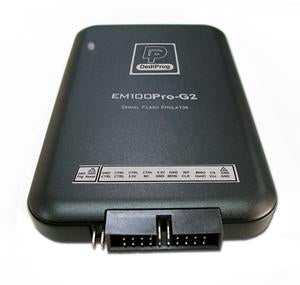








Universal All-In-One Dev. Interface
PEmicro’s Multilink is a debug probe which allows a PC access to the Background Debug Mode (BDM) or JTAG interface on wide range of ARM Cortex and NXP®/STmicroelectronics processor families. The Multilink is available in two different configurations, ACP(Out-Of-Stock) and Universal (is available), which have the same functionality and vary only by their supported MCU's.
What's included
- 1 x Multilink unit
- 1 x USB 2.0 High Speed Cable, Type A to Type B, 6-ft.
- 1 x 6-pin 0.100" pitch ribbon cable
- 1 x 14-pin 0.100" pitch ribbon cable
- 1 x 26-pin 0.100" pitch ribbon cable
- 1 x 20-pin 0.100" pitch ribbon cable
- 1 x 10-pin 0.050" pitch ribbon cable
- 1 x 20-pin 0.050" pitch ribbon cable
My AutoQuote | Easy & Fast
Easily generate and keep track of your quotes. You can also place an order based on an active quote. Both Quotes and Orders are organized for you under your account page.
More informationSpecifications
| Connection | Very high-speed, hassle-free USB 2.0 communications interface |
| Can provide power to target MCU | Yes |
| USB powered | Yes |
| Multi-voltage support | Yes, for targets ranging from 1.6 to 5.25 Volt |
| I/O line clamping for added protection | Yes |
Product information
| Features |
|
| Software Spotlight | Real-Time Expression View This view gives the user the ability to view variables and memory while a target ARM device is running. Sometimes the process of halting the target masks a bug. Sometimes, in order to reproduce a particular bug, the program must be kept running while being fed a particular set of data. In those cases, having the ability to view variable values as they change without halting the target is a great asset. |
| OS-Aware Feature Supports FreeRTOS The GDB server will automatically detect the presence, type, and configuration of an OS by querying the application’s symbol table for identifying characteristics. Using these discovered symbols, the debugger can traverse the kernel’s internal data structures to enumerate the available threads and their corresponding execution context. This information is then used to dynamically populate the Eclipse views as the user navigates between the threads. Additional OS support is expected to be added soon. |
















